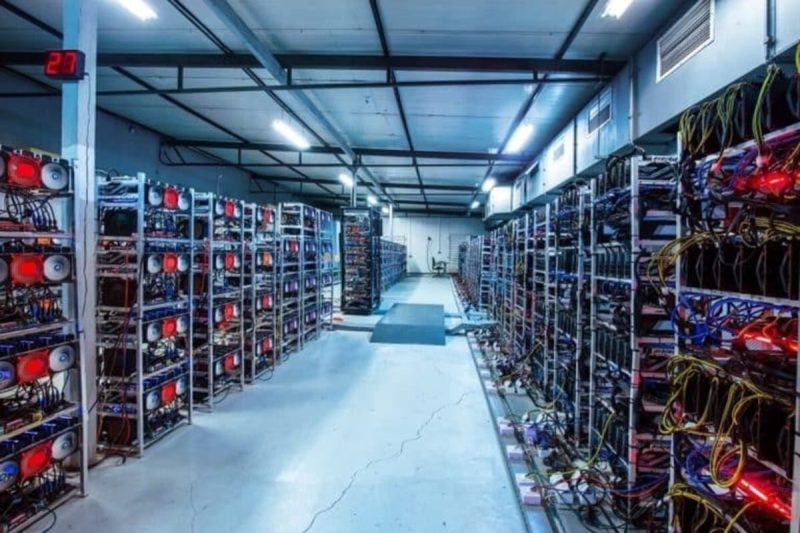Crypto Miners’ Bitcoin Reserves Hit Lowest Level Since May Amidst Increased Selling Pressure

Source: AdobeStock / Photocreo Bednarek
Bitcoin miner reserves have reached their lowest point since May, signaling increased selling pressure as the largest cryptocurrency records a December gain of more than 13%.
Data from CryptoQuant indicates that Bitcoin miners’ reserves have been steadily decreasing since the beginning of December. In the past 24 hours alone, miners reportedly sold around 3,000 bitcoins, bringing their total holdings to approximately 1,834,447 BTC.
On December 28, the net flow of Bitcoin stood at minus 1,524 BTC, indicating that withdrawals exceeded the new coins minted. This ongoing trend raises questions about potential selling activities by miners and their impact on the overall market dynamics.
The decline in miner reserves started in late October and has accelerated this month, reaching 1.832 million BTC from October’s high of 1.845 million. In the last 24 hours alone, miners reportedly sold approximately $129 million worth of BTC at the current trading price of $42,891.
In a notable move, #Bitcoin miners have sold over 3,000 #BTC in just the last 24 hours, amounting to approximately $129 million. This substantial sell-off could influence the price of $BTC. pic.twitter.com/mUl4ebDwpm
— Ali (@ali_charts) December 28, 2023
Despite BTC’s price rising from $30,000 to nearly $45,000 during this period, the ongoing reduction in miner balances is noteworthy. The impact of miner activity on the prospects of bullish price continuation is a topic of discussion among analysts.
According to CryptoQuant, the balance reductions are considered “substantial.” Miners have experienced a significant revenue boost in Q4, with increased fees amid the highest BTC price levels since April 2022.
Miner reserves represent the number of coins held in affiliated miners’ wallets, and the decline in reserves indicates coins being moved to crypto exchanges, potentially in preparation for sale.
However, it’s worth noting that MicroStrategy has reportedly absorbed a significant portion of the miners’ sell-off, with CEO Michael Saylor recently announcing the acquisition of an additional 14,620 bitcoins by the company.
Bitcoin Miners’ Selling Pressure and Difficulty Surge Precede Halving, Setting Stage for Potential Price Impact
The recent selling pressure from Bitcoin miners, as indicated by the decrease in their reserves, may have contributed to Bitcoin’s subsequent decline to around $42,000. Miners regularly sell BTC to cover operational costs, but this instance involves a more substantial and concentrated selling activity.
The timing of these withdrawals suggests that miners may have taken advantage of the market recovery to sell their BTC holdings. Miners’ behavior is closely monitored as the cryptocurrency community approaches the upcoming block subsidy halving, a key event in Bitcoin’s lifespan.
Bitcoin is scheduled to undergo a halving in April, reducing miner rewards to 3.125 BTC per block from the current 6.25 BTC. Analysts anticipate that this halving could trigger a supply shock, potentially driving bitcoin prices to $160,000. Market participants expect miners to attempt to hoard BTC stocks ahead of the block reward, dropping by 50% to 3.125 BTC.
However, amidst these developments, the Bitcoin network has experienced a significant surge in mining difficulty, reaching an all-time high of over 72 trillion at block height 822,528. This represents a 6.98% increase from the previous level, indicating a global acceleration in mining operations and the deployment of more powerful computing resources within the industry. The heightened mining difficulty suggests preparations by miners for the upcoming Bitcoin halving event.
The current hashrate, calculated over a seven-day moving average, has exceeded 525 EH/s, reaching approximately 631.85 EH/s at block height 822,590. The concurrent rise in both mining difficulty and hashrate underscores the robustness and maturity of the Bitcoin network, showcasing its resilience amid market volatility.
Bitcoin’s mining difficulty is a fundamental metric in the cryptocurrency space. It adjusts approximately every two weeks to ensure that new blocks are generated, on average, every 10 minutes. The adjustment is crucial for maintaining the stability and security of the Bitcoin network. As more miners join the network, the difficulty increases, and as miners leave, the difficulty decreases. The next difficulty adjustment, scheduled for January 5, 2024, will provide further insights into the evolving dynamics of the Bitcoin mining ecosystem and its potential impact on the broader market.
The post Crypto Miners’ Bitcoin Reserves Hit Lowest Level Since May Amidst Increased Selling Pressure appeared first on Cryptonews.



